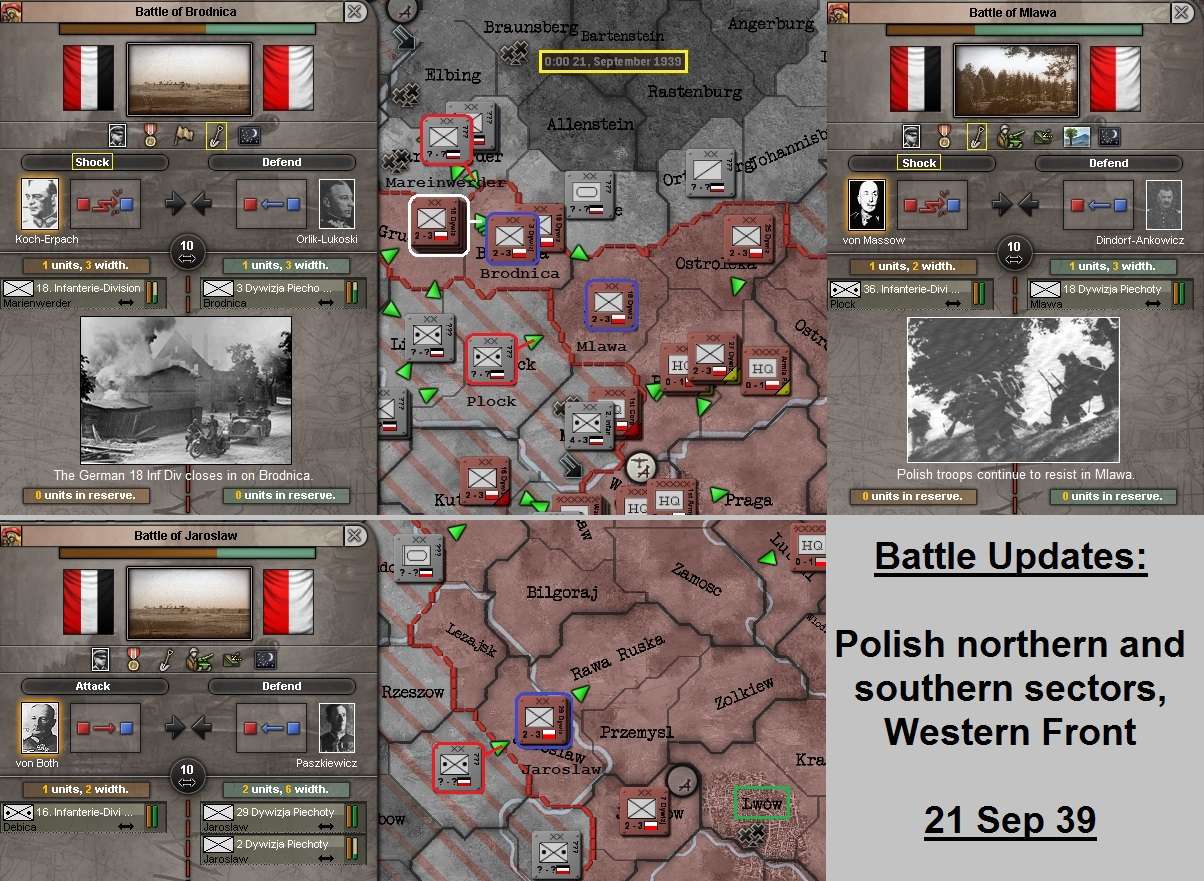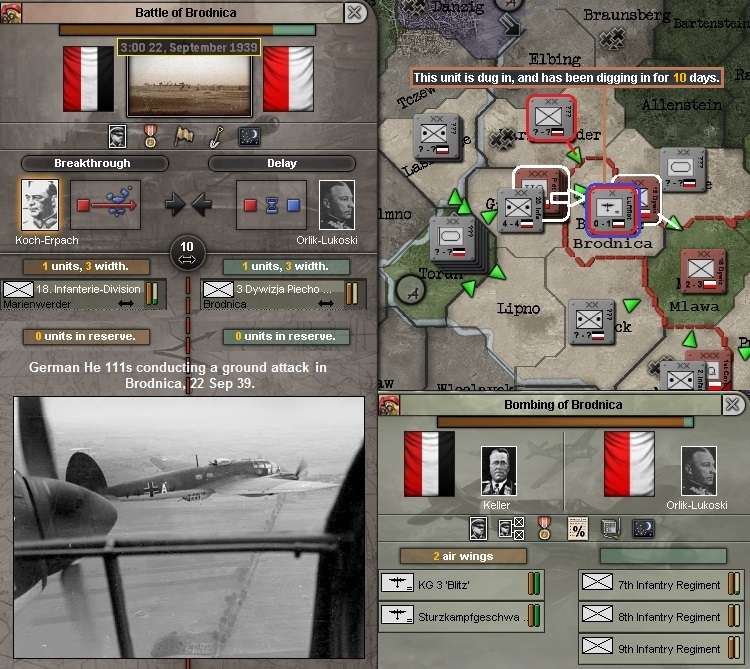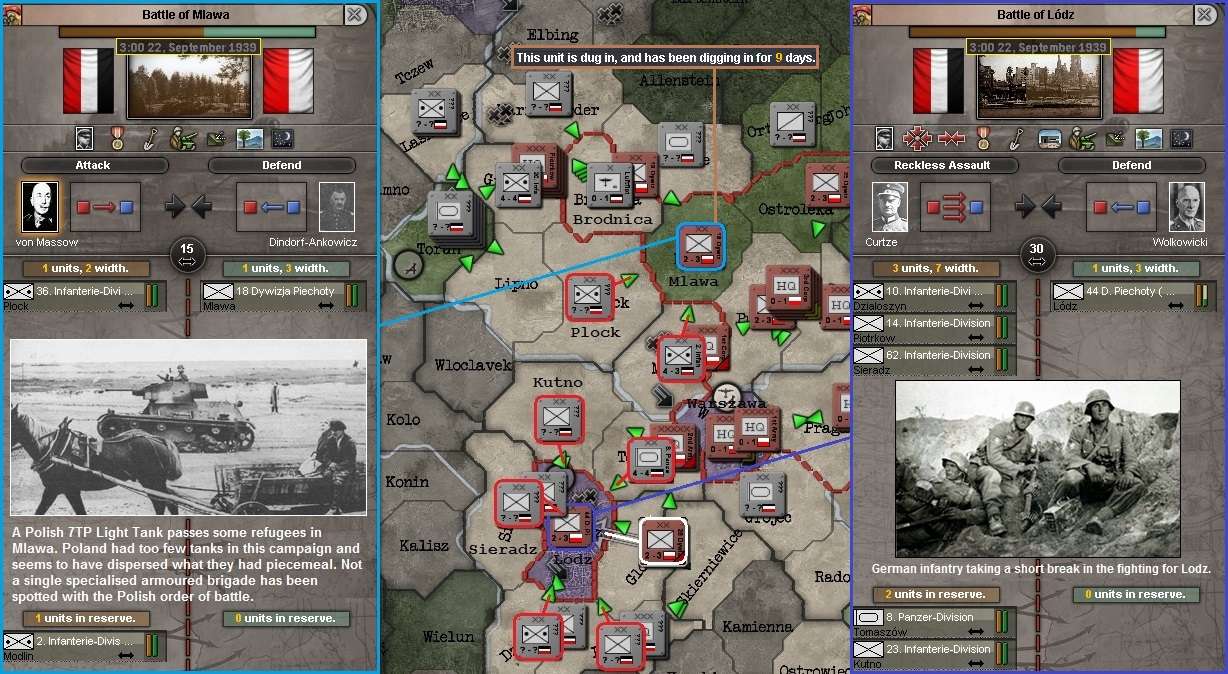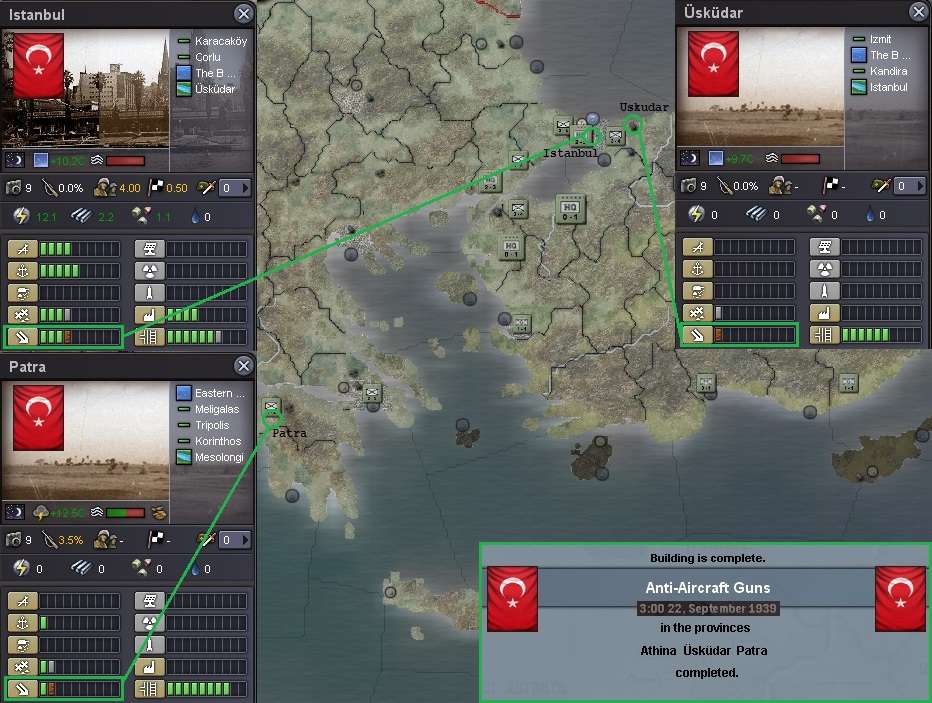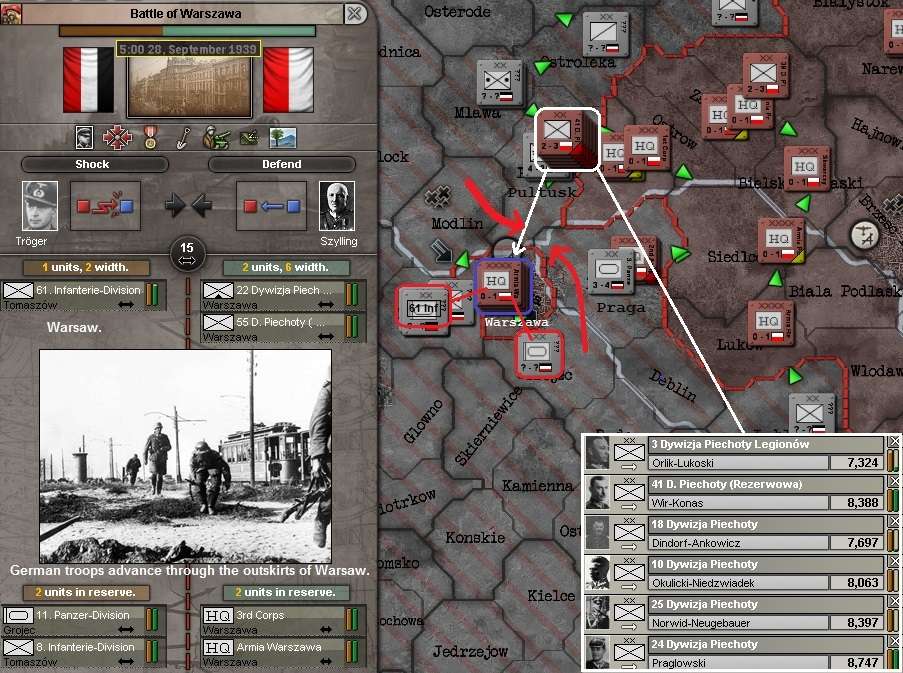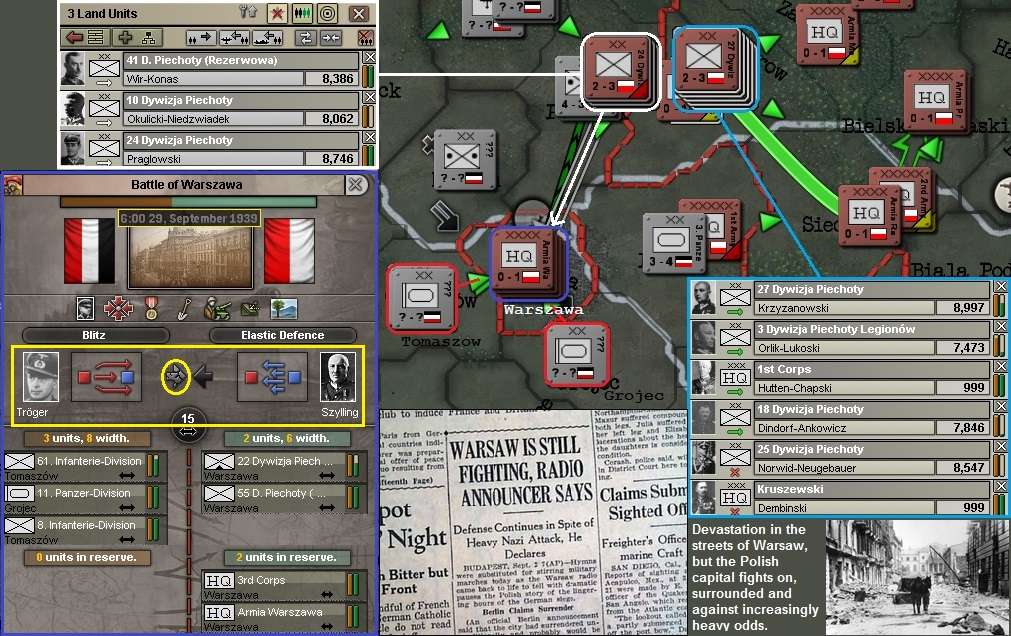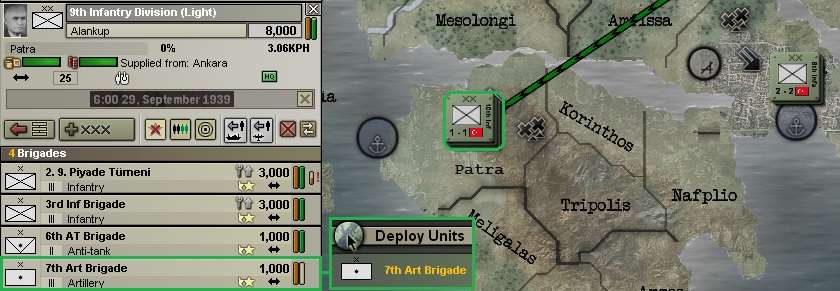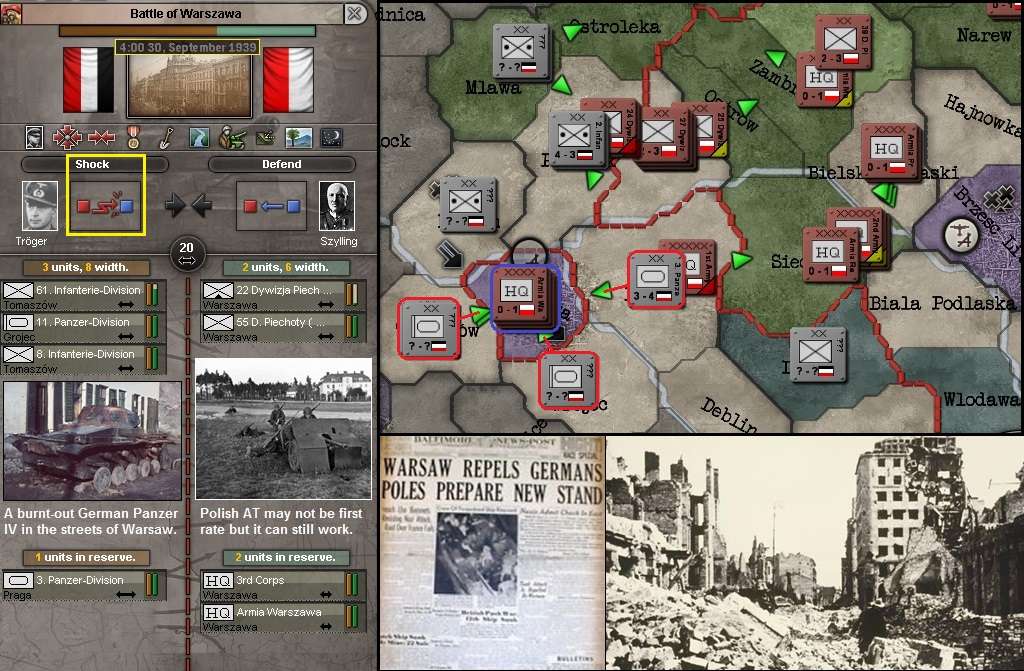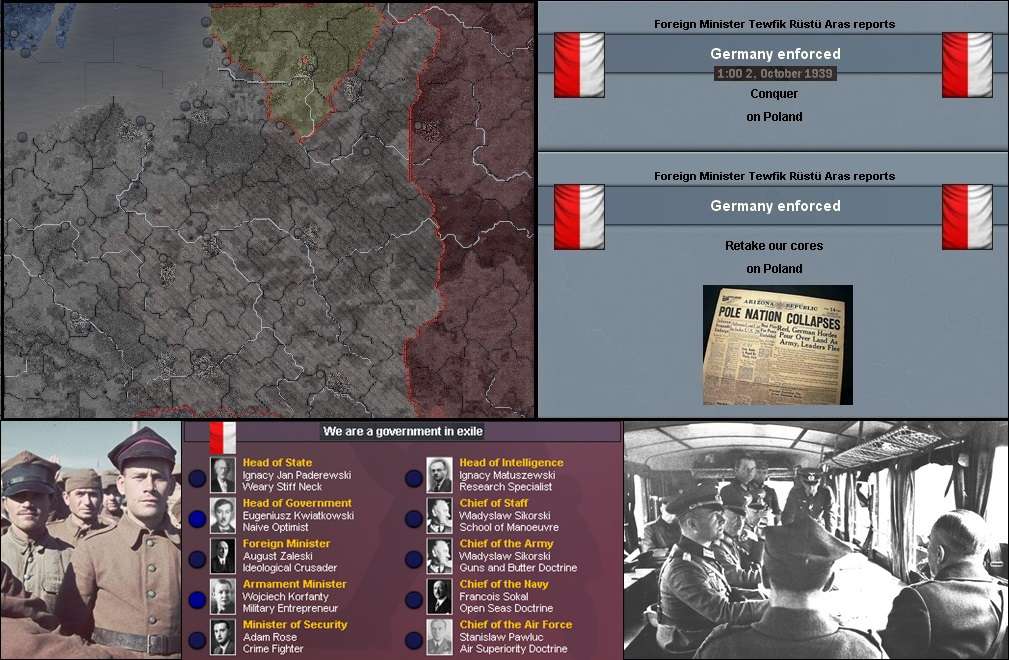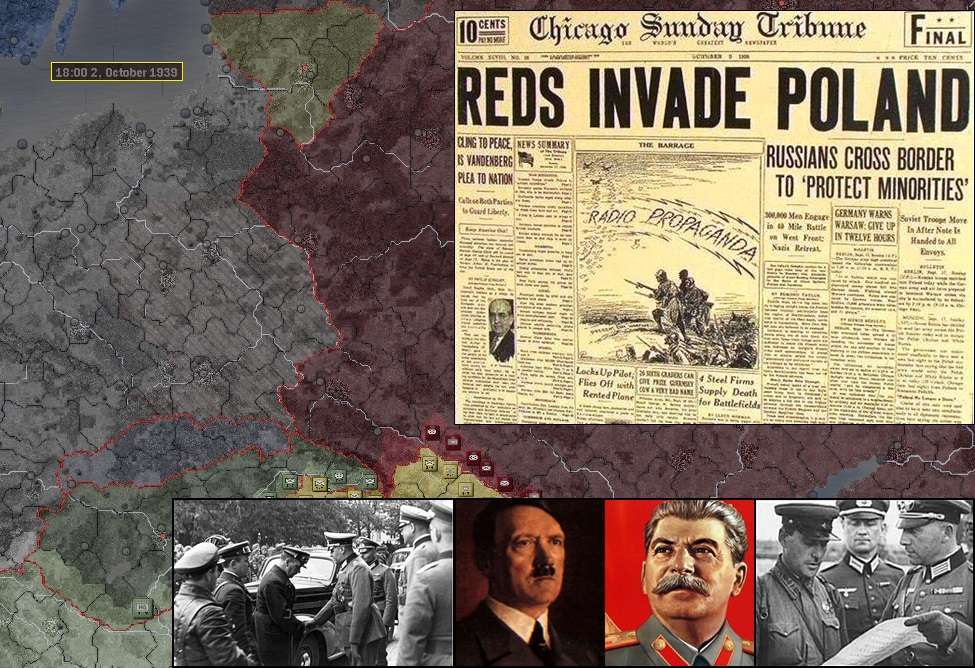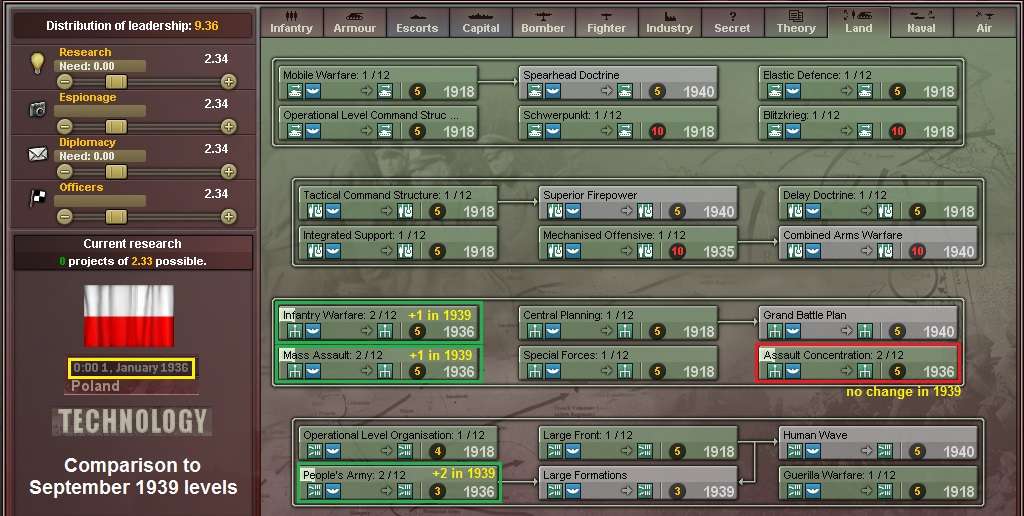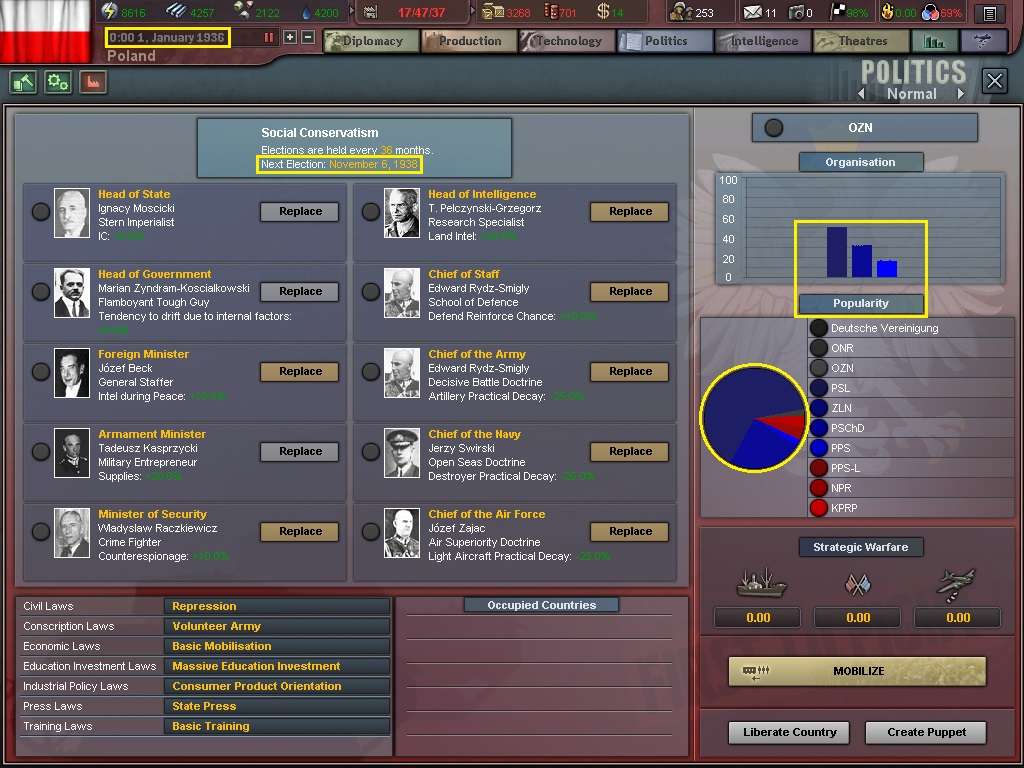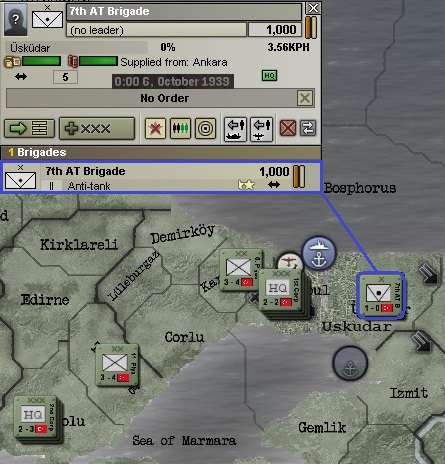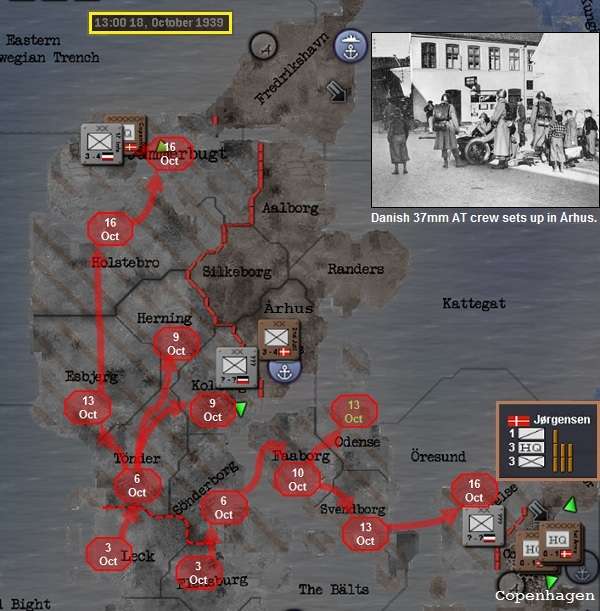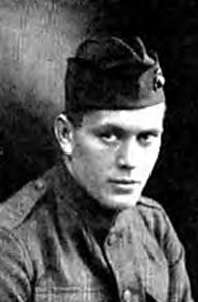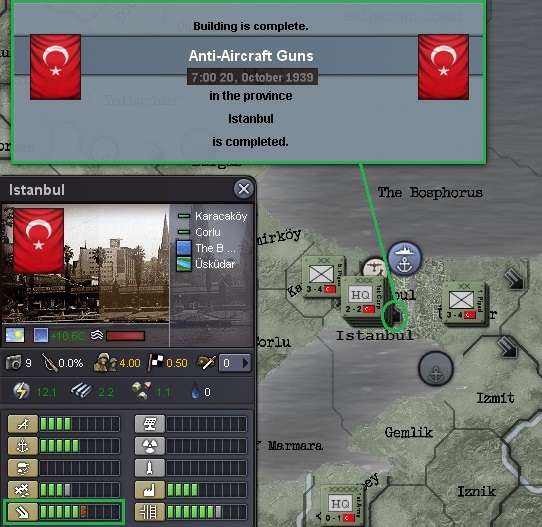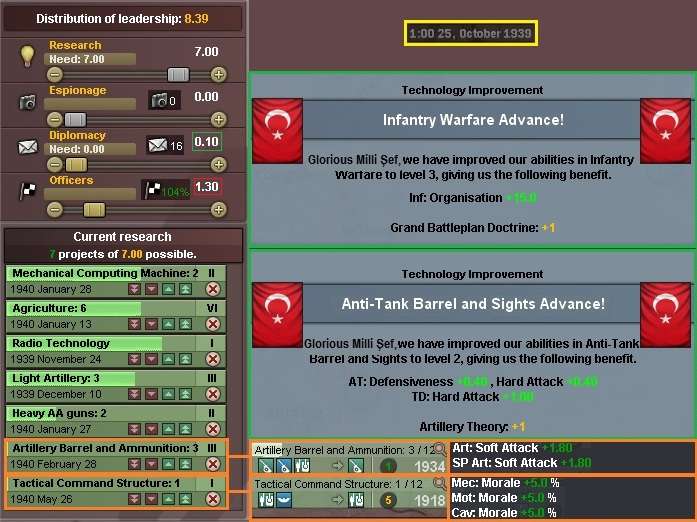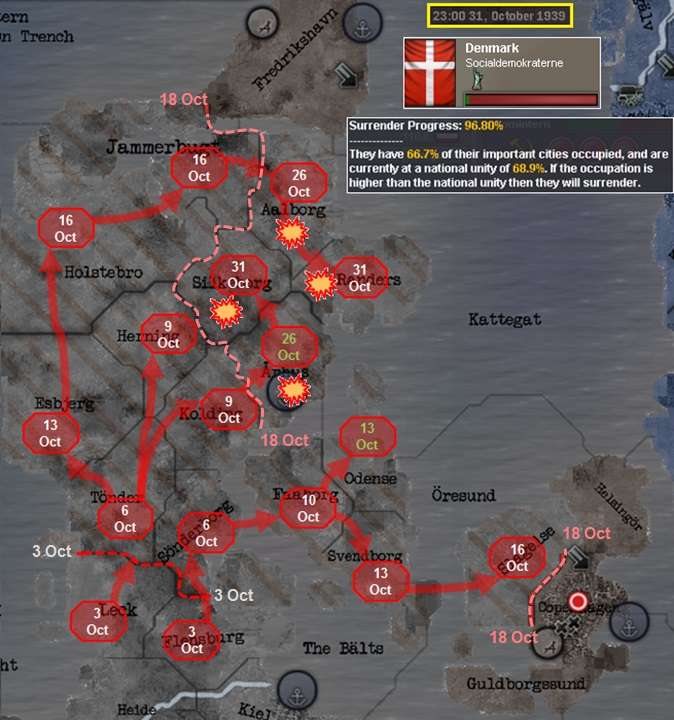Chapter 66: Poland’s Agony (21 September to 3 October 1939)
21 Sep 39
Following on from his last report, our Defence Attaché in
Warszawa receives reports on three key battles.
Warszawa itself has still not been attacked.
Brodnica continues to hold out, allowing thousands more Polish troops to escape the
Grudziadz-Brodnica Pocket – but to what fate? Similarly, MAJGEN Dindorf-Ankowicz’s 18th Div holds on strongly in
Mlawa, keeping that province open for the staged withdrawal of forces from the west. In the south, a new German attack has begun on the Polish 2nd and 29th Divs in
Jaroslaw. The 2nd is weak from earlier fighting and was attempting to withdraw to
Rawa Ruska when the Germans attacked. The 29th is fresh, but is already under considerable pressure.
Polish staff liaison officers also discuss their
Land Doctrine development. Alas, as with their equipment priorities, there is plenty of hit and miss here as well. The highest development is in
People’s Army (L3) – which may have been of more use if they’d had any MIL or GAR forces! A bit of a waste, unless it helps partisan activity during what could be a long occupation - which is a bit too late.
Assault Concentration (support brigade organisation) is at L1 – but the Poles have not built any support brigades! More waste.
Infantry Warfare (infantry organisation, L2) and
Mass Assault (infantry morale, L2) are of more conventional use. All told, of the eight doctrine levels researched, half have been wasted. A poor return with so few LS points to apply.
A check of global naval reporting of ships sunk shows one German DD squadron was sunk by the British CA
HMS Berwick, and the German CL
Nürnberg has been sent to the bottom by the French CL
Emile Bertin, since the war began.
News Report: Washington DC, US. President Roosevelt makes a speech to Congress saying the United States should amend its Neutrality Acts to allow countries fighting Germany to purchase American arms. The President says the current laws stood to give passive “aid to an aggressor,” while denying help to victimised nations.
22 Sep 39
At 0300, the Embassy in
Warszawa provides its daily update. The Polish 22nd Mtn Div has now been entrenched in
Warszawa for three days and has still not been attacked.
[In OTL, Lwow fell to the Soviets on this day, following their invasion of 17 Sep.]
Brodnica is now being pounded by two wings of German tactical bombers. Despite Orlik-Lukoski’s
delaying tactics, the German 18th Inf Div is about to
break through, despite itself being low on organisation.
In
Mlawa, the Polish 18th Div is standing up well, being well dug in in a forest province. They should be able to resist for some time, keeping the lifeline open for those troops still able to make it out of the pocket to the west.
Lodz still holds out, but the Germans now have overwhelming numbers and launch a
reckless assault in an attempt to finish off the stubborn defence, which began on 18 Sep. 44th Div is beginning to buckle, and 28th Div has not yet managed to make it to
Lodz from the east. The situation is precarious.
In the south, the German 16th Inf Div (Mot) presses on with the
assault in
Jaroslaw, with the Polish
defence fading. Once that line fails, there will be a clear path to the key city of
Lwow. In
Turka, the stalwart defence of the Mazowiecka Cav Div continues, with 9 Pz Div’s assault still not having made any significant inroads. The legend grows.
In Turkey, three new Heavy AA batteries are delivered.
Üsküdar gets its first, as it is the designated fall-back position should
Istanbul fall, while some AA will be useful in protecting units that may be sent to recover there during a future battle of attrition. Based on the last Cabinet discussion on national resilience, another factory complex (1 x IC) is ordered. A long-term project, it will be built in as safe a place as can be found when the time comes.
At 1300, news comes through that 3rd Div’s defence of
Brodnica is over. The province has fallen, cutting off two more Polish divisions fleeing from further west. Three are now retreating from
Brodnica to
Mlawa, so some of the ‘pocketed’ troops have been saved. And at 2300 that night, news comes through that the beleaguered garrison in
Lodz has been forced to surrender - another sad day for the Polish nation.
23 Sep 39
Amid all the bad news from the Polish front, back in
Ankara the campaign for the
National Republican Guard has commenced. The Government’s recruiting target is 40 MP, to be devoted to a major expansion of the Army in coming months. Braanszon and Persephonee have come up with a new poster to take advantage of the Battle of Turka.
[Ed: I hope the Google translation on this is not too far out. But to have put it in English would have been unrealistic.]
“Turks for Turka! Join the National Republican Guard Today!”
24 Sep 39
At 1100, the Mazowiecka Cav Div can take no more. With no organisation remaining and having lost around 500 men killed, they retreat from
Turka north-east to
Sambor, leaving the road to
Lwow open, but their legend intact. They stood off the German panzers alone for more than four days, but finally succumbed.
25 Sep 39
Given what Germany has shown itself capable of, the Netherlands wisely decides to mobilise, perhaps anticipating a German attack once they have finished with Poland.
26 Sep 39
The
Battle for Warszawa finally begins. In the last day, the defence has been reinforced by the 55th Div. The German 61st Inf Div, led by MAJGEN Tröger, begins the
assault before dawn, but makes little initial impression. The medium armour of 11th Pz Div remains in reserve for now, reluctant to enter the close quarter fighting in the great city. Further north, the defence of
Mlawa has now collapsed, with the German advance beginning to isolate the Polish capital from both the south and the north-west.
28 Sep 39
Two days later,
Warszawa continues to resist strongly, but the German
shock attack has now picked up the pace, while more German reserve units attempt to enter the fray. A large group of retreating Polish divisions – the remaining stragglers from the pocket and two fresher divisions) is trying to make it to
Warszawa from
Pultusk, which has now been lost to the Germans. To the east of the city, the trap is sprung, with 3rd Pz Div having taken
Praga (which only contained HQ units) to fully surround the capital.
[In OTL, the Siege of Warsaw ended on this day.]
29 Sep 39
Warszawa fights on grimly, but the pressure is now telling on 22nd Mtn Div. GEN Szylling has shown great ingenuity, foiling the German’s
blitz attack with a very effective
elastic defence, making the most of the urban conditions. This is just as well, as 11th Pz and 8th Inf Divs have now joined the German battle line. Only three Polish divisions are now heading for
Warszawa from the north, the rest having instead turned east, to what they see as safety, making no pretence of holding the line.
A new artillery brigade is delivered in
Patra, for now allocated to 9 Inf Div (Lt). Another Heavy AA battery is ordered, plus a new naval transport: the more troops we commit to the defence of southern Greece, the more Turkey wants to ensure it will be able to extract as many as possible in the event the line breaks. Turkey cannot afford to have large troop surrenders.
30 Sep 39
The next day, in
Warszawa, 22nd Mtn Div still fights on but is almost spent. Soon 55th Div will need to take on the
defence. Seeking the knockout blow, the Germans mount another
shock attack, while 3rd Pz Div moves into a reserve position to the east of the city
. [In OTL, on this day the Polish government-in-exile was established in Paris. Władysław Raczkiewicz and Władysław Sikorski became President and Prime Minister, respectively.]
More AA is built in
Istanbul, bringing it up to five heavy batteries.
1 Oct 39
The morning report from the Turkish Embassy in
Warszawa indicates the end is near. The few remaining diplomatic staff shelter in the Embassy’s air raid bunker, while our intrepid Defence Attaché continues to file reports, as the Germans close in. They may have diplomatic immunity, but that does not extend to stray aerial bombing or artillery shells. 22nd Mtn Div surrendered overnight, leaving the 55th in charge of the
defence, sorely pressed by a German
blitz attack. German panzers pass through some of the less damaged streets to position themselves for the final assault. The Polish commander in
Warszawa, GEN Szylling, has managed to fight on more effectively and for longer that most had anticipated. Alas, the experience he has gained will not do him much good in a German POW camp – if he is "lucky" enough to make it to one.
At 6pm that evening, the battle for the capital is over, and with it the hopes of the Poles. The Poles approach the Germans under a flag of truce to offer their surrender. They pile up their arms in the city centre and march off into captivity. No-one knows what lies ahead for them, but Poland has now reached 100% surrender progress. So, although the Government had previously fled to
Lwow, where a new capital has been established, it will be all over by midnight.
(1:54m)
The Fall of Warsaw, the Maginot Line … and Puerto Rico – saved from imminent Nazi invasion. “When I’m in Puerto Rico, dearie”: Oh dearie! How typical of this (in the West) “Phoney War” period.
2 Oct 39
The September Campaign (which just managed to last into October) is over, just over a month after it began. The Polish Government never actually surrendered – they have fled overseas to form a Government in Exile. But troops under arms all over the remaining Polish territory make their own arrangements to surrender, with Germany declaring its conquest of Poland at midnight. Turkey’s Embassy in
Warszawa has emerged damaged, but with no casualties among the limited number of staff who remained. In his final report from
Warszawa, at 1am Ambassador Ahmet Ferit Tek advises Ankara that Germany has seized much of western Poland and incorporated it into the Greater German Reich. A temporary military governorate controls the rest of the country.
Ignacy Jan Paderewski (b. 18 November 1860) was a Polish pianist and composer, politician and spokesman for Polish independence. He was a favourite of concert audiences around the world. His musical fame opened access to diplomacy and the media. In this alternate world, he has been President of Poland since January 1936. He has now presided over the destruction of Polish independence. Known as a ‘Weary Stiffneck’ – and this is definitely making him very weary. He is currently en route to Paris with the rest of his Government in Exile, having exited through Romania.
At 6pm, a previously secret clause of the Nazi-Soviet Pact is revealed: the Soviet Union marches unopposed into eastern Poland, which Germany concedes to the Soviets in line with the agreement hammered out between them earlier in the year. Any Polish units still in that zone are forced to surrender to their new Soviet masters. It becomes obvious that the Germans never had any fear the Soviet Union would intervene. Scenes are played out along the new border between the German Reich and the Soviet Union, where soldiers and officers from the respective sides meet amicably. Of course, the Western media portrays this as in invasion. But clearly, as the Soviets proclaim, they never declared war on Poland, but simply moved in to protect minorities in eastern Poland and to reclaim territory they believe was always rightfully theirs. While this may cause a few uncomfortable moments in the official corridors of Ankara, it is easily enough “explained” – especially when the press is strictly under Government control.
[Ed. Of course, on a personal non-game note: the backstabbing Communist bastards! Another Polish partition  . Still, at least here they don’t actually attack Polish troops and only step in after the German conquest is complete. Like the carrion-crawlers they are.
. Still, at least here they don’t actually attack Polish troops and only step in after the German conquest is complete. Like the carrion-crawlers they are.  ]
]
3 Oct 39
The developments in Poland have done nothing to dent the image of the Soviet “rescuers” of eastern Poland. Comintern alignment distance has now plummeted to only
93.06 – less than
50 away from being able to join the bloc! In fact, such is the new-found popularity of Turkey’s Soviet ‘brothers’ that their State-run tourist agency is suddenly doing a good trade in holiday packages! And now they share a direct border with the Germans, Turkey is more guaranteed of a Soviet distraction should it successfully join the Comintern.
Come to Baku, the French Riviera of the Caspian Sea! Last year’s posters are dusted off in travel agencies in Istanbul. Beaches and oil rigs – what more could a Good Communist Man (or Fellow Traveller) want for his holiday?
News Report, London, UK. Winston Churchill [First Lord of the Admiralty by now in OTL, still just an influential backbencher in this universe] gives a radio address from London reviewing the first month of the war. During this broadcast, he famously calls Russia “a riddle wrapped in a mystery inside an enigma.”
Coming Up: The Turkish Military looks forward to buying some Soviet arms licenses again in the near future. The Armaments Ministry is tasked to have a look at the latest Soviet ‘export catalogue’ to see what might be available soon. Apart from some more decent tanks, a few wings of more modern interceptors would be useful. The last time the Air Force procurement chief looked, what was on offer from the Soviets was no better that the obsolete Curtiss Hawk 3s currently in service. The next big question is, of course, where will Germany turn next, and when? By now, Denmark, the Netherlands, Belgium – and of course the military powerhouse of Luxembourg – have all mobilised, but remain neutral. Without serious Allied support, they are likely to suffer the same fate as Poland – except a lot more quickly. For now, Turkey continues its
National Republican Guard recruiting program and hopes to induct the new recruits into the manpower pool by the end of October. Without the forces to fight a forward defence, the Turkish Army remains behind the
Calistar and Iskandar Lines, hoping Germany looks the other way, at least until the Comintern can be joined. While that alliance plan is no
guarantee of security, it would be a lot better than fighting alone, given the Allies are already at war with the Germans.


